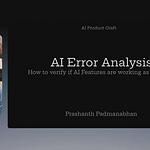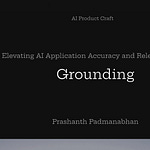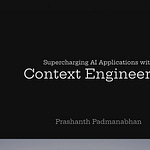We’re living in the most empowering era for builders.
Between tools like Replit, GPT-4o, and ElevenLabs, anyone with a problem to solve can now prototype a solution in a weekend. But here's the real challenge: knowing where to start—and how to finish.
Over the past few months, I’ve been refining a method I call the Vibe Coding Framework. It’s a five-step system that helps you go from vague idea to working, AI-powered product—without falling into the traps of over-planning or under-building.
If you’ve ever thought, “I’ve got a great idea, but I don’t know how to bring it to life,” this is for you.
Step 1: Draft an Idea Brief
Every good app starts with clarity. Not a long spec—just a sharp one-paragraph statement that captures:
The persona
The job to be done
The problem worth solving
Example:
A busy real estate investor wants to track rent payments and get notified about delays.
That’s all you need to begin. Keep it simple and specific.
Step 2: Create a Vibe Product Definition Document
Now give your idea just enough structure to guide the build. Give the idea brief to ChatGPT and ask it to write a product definition document following this structure.
Expand your brief into a lightweight product definition, with:
Persona
Job to be done
Three key use cases
A quick sketch of the user journey
This step forces you to think a few steps ahead—just enough to design something meaningful, not bloated.
Step 3: Generate a Vibe Coding Prompt
Translate your product definition into a Replit-ready prompt. Give the product definition document to ChatGPT and ask it to write a prompt for Replit.
For example:
“Build a Replit app with HTML, JavaScript, and a simple backend including user form, dashboard, and data persistence. Use this product definition as an input”
This prompt becomes your build instruction. You can use it with ChatGPT, or just follow it yourself as a plan. Either way, you're no longer starting from scratch—you’re starting from intent.
Step 4: Build the First Version in Steps
Use the “build incrementally” rule.
Break your build into three phases:
Build the UI
Wire up the frontend logic
Connect the backend
This keeps your app stable, testable, and easy to debug. You can stay in flow, get feedback fast, and keep momentum.
Step 5: Add AI Capabilities
Once the basic app works, layer in AI.
Pick one meaningful feature that genuinely improves the experience. A few ideas:
Voice assistant with ElevenLabs
Text summarization
Smart responses or tagging
Example:
“Add a voice assistant that guides users through the dashboard.”
AI should enhance usability—not complicate it. Focus on real utility.
For Product Managers: Prepare for Vibe Coding Interviews
If you're a product manager looking to stay relevant in the age of AI, this framework isn’t just a tool—it’s a mindset. It helps you demonstrate:
Structured product thinking
Fluency with AI and prototyping tools
The ability to move from concept to code
Whether you’re prepping for a product interview or want to build credibility through working prototypes, this framework gives you a practical edge.
🎓 Join my free Lightning Lesson this Saturday to learn how to apply the Vibe Coding Framework to real PM interview assignments:
👉 Register here
What You Get by Following This Framework
By the end of this process, you’ll have:
A focused MVP
A working app with auth and data persistence
One or more real AI integrations
A repeatable system for turning ideas into products
This works for side projects, internal tools, or career prep. The key is: you’ll finish what you start.
Final Thoughts
Ideas are easy. Execution is rare.
The Vibe Coding Framework helps you cross the chasm—from concept to code—without getting stuck in planning paralysis or tool overload. It’s not about shipping a perfect product on day one. It’s about shipping, learning, and building momentum.
Start with a paragraph. End with a product.









